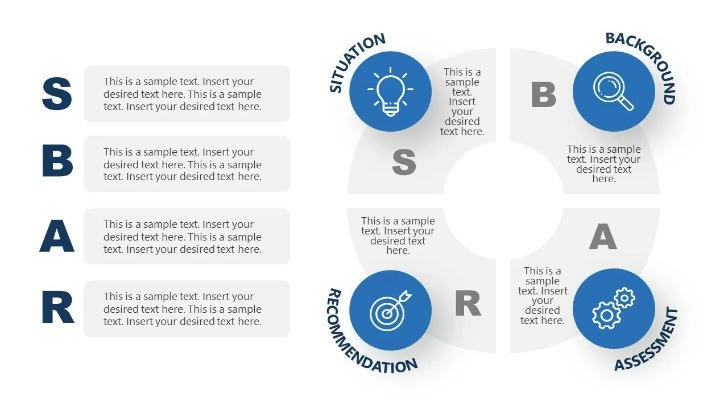How to communicate effectively in the workplace? The golden rules of communication you must master
In the American workplace, effective communication is not only the basic skill to complete work tasks, but also a key ability that affects personal career development and the quality of teamwork. Whether you are engaged in nursing, engineering, education or administrative management, every expression, report, and dialogue in collaboration will affect others' professional cognition and trust in you.
But communication is never "talking a lot" or "talking fast", it is a set of systematic abilities - including listening, expression, confirmation, feedback and cultural understanding. Especially in the American workplace with a tight pace and intensive cross-functional collaboration, the quality of communication often determines whether a project is smoothly promoted, whether a handover is completed safely, and even affects the morale and performance of the entire team.
Mastering a few key rules can make you express more logically, understand more accurately, and cooperate more smoothly in the workplace.

Ⅰ. The core principles of communication
1. Listening first: not hearing, but understanding
In American communication culture, "listening" often wins more trust than "expression". Active listening means paying full attention to the communication, not interrupting, and confirming understanding through response and repetition.
For example, when a colleague is explaining a problem, you can use short feedback: "I see.", "That makes sense.", or further confirm: "So you're saying the issue started yesterday evening?"
This way of listening makes the other party feel respected and reduces the possibility of misunderstanding.
2. Structured expression: SBAR communication model
The SBAR model is often used in high-pressure industries such as medicine, nursing, and project management to help communicators quickly, clearly, and completely convey key information:
S (Situation): What is the current situation?
B (Background): What is the relevant background?
A (Assessment): What is your assessment/judgment?
R (Recommendation): What action do you want the other party to take?
Using SBAR not only improves efficiency, but also helps team members quickly align their understanding in emergency or high-pressure scenarios.

3. Feedback strategy: be specific and take into account relationships
Effective feedback includes three characteristics:
Specific and clear: point out specific behaviors rather than general comments;
Objective and neutral: avoid emotional language;
Actionable: put forward constructive suggestions or solutions.
For example: "The structure of your handover record today is very clear. If you can add a little more patient response, it will make it smoother for the successor colleagues to handle it."
In the American workplace culture, frequent feedback is the norm, but the way of high-quality feedback determines whether it promotes collaboration or destroys relationships.
4. Understand cultural differences: do not assume or be arbitrary
The American workplace is highly diverse, and different cultural backgrounds may have very different standards for "directness", "politeness" and "conflict avoidance". Some cultures prefer indirect expression, while the native American communication style is more direct and clear.
Instead of "head-on" or misunderstanding the other party's motives, it is better to take the initiative to understand the cultural background and clarify each other's understanding by asking questions or repeating at the appropriate time. Avoiding assumptions and promoting consensus are essential communication skills in a multicultural environment.
Ⅱ. Communication is an amplifier of workplace influence
Communication is not just about conveying tasks, but also about shaping others' judgment of your professional ability, sense of responsibility and sense of collaboration. In the American workplace, people who can express themselves clearly, actively listen and are good at feedback are often more likely to gain trust, strive for resources, and have more potential for team leadership.
Especially in a professional environment where positions are highly dependent on each other (such as medical, nursing, aviation, scientific and technological research and development, etc.), communication errors often mean information gaps, operational delays and even safety hazards.
Communication ability is an "invisible hard power" and an implicit indicator for judging whether a person is "worthy of collaboration".
Ⅲ. Case analysis: A sentence in the handover almost led to a misjudgment
In a California city hospital, night shift nurse Eva arranged analgesics for a postoperative patient in the early morning. After taking the medicine, the patient was slightly drowsy but his vital signs were stable. When handing over the shift in the early morning, Eva did not specifically mention this drug reaction, but simply described the patient as "normal".

The nurse who took over found that the patient's consciousness was slightly slow during the inspection, and immediately started the postoperative complication screening process. The doctors on duty in the entire ward were called in temporarily. It was finally confirmed that the state was just a normal drug reaction, and it was a false alarm.
If the handover can be explained according to the SBAR structure: "The patient recovered well after the operation, analgesics were given in the early morning, and mild drowsiness is a normal reaction. It is recommended to continue to observe", it can not only avoid misjudgment, but also save team resources.
This scene shows that ** omissions in communication are often not a problem of ability, but a lack of methods and awareness**.
Conclusion
Effective communication is not only a soft skill, it determines whether a person can be understood, trusted, and cooperated in a complex system. In the American workplace environment, clear expression, structured information, timely listening, and strategic feedback are all underlying abilities that promote career growth.
A professional who masters the golden rule of communication can not only complete work tasks more efficiently, but also win interpersonal trust and accumulate long-term influence in seemingly invisible communication.
If communication is done well, many problems will not occur at all; if communication goes wrong, even the best plans may fail. Instead of dealing with the consequences passively, it is better to speak every sentence and listen to every word in a more professional, sensitive and conscious way from now on.
